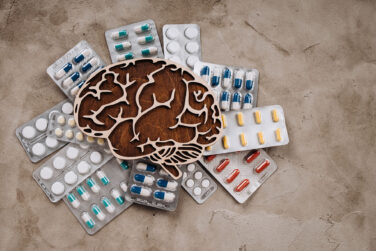As healthcare communicators, we’ve had to reimagine and redesign our approach to reaching, educating and motivating consumers because the way they acquire information has drastically changed. No longer do we live in a world in which mass communication is the lead driver of brand awareness. Today, that is only one piece of what has become an intricate and integrated mosaic of information sources. To win consumers’ hearts and minds, we have to earn our way into their lives.
As a result, earned communications is more integrated, more content-based and more emotional than ever before. We don’t simply pitch a product or angle to a list of reporters and rely on them to write our brand’s stories. We embrace our role as storytellers and create numerous brand stories, knowing that ultimately they will be delivered through a variety of channels and influencers. Regardless of the channel, our discipline and the stories we create are designed to compel healthcare consumers to act, share with others or influence the discussion they have with their healthcare provider.
Interestingly, the changes we see in how health consumers connect with brands has not only changed the way we communicate, they’ve also had an impact on the way we operate. The agency operating model has evolved from a traditional one—in which generalists were “turnkey,” working with clients, developing the strategy, writing materials, pitching the media, analyzing results—to an integrated and customized model of communications specialists. In addition to account managers, client teams are now comprised of specialists in creative, traditional and social media, insights and planning, analytics and more.
While there have certainly been significant changes in how we reach our targets and the way in which we operate, some brand-building fundamentals will always hold true. Among the most critical, is the need for storytellers and ambassadors to build an emotional connection between healthcare consumers and brands to inspire action. However, even within that constant, the storytellers themselves have changed.
Authenticity is Key
It’s not just celebrities who are brand ambassadors anymore. We mobilize patients and online influencers with authentic stories to speak for brands. We create new types of content for various platforms and partner with publishers to spread our messages. And we look for storytellers who have their own ways of sharing and spreading information and news. We now partner with brand ambassadors who communicate with and reach our target through their social graph, whether it be Facebook, Twitter or Instagram. The result is authenticity—authentic stories reaching our target where they authentically are looking for information. And in a world where consumers have never been savvier about being “sold to,” authenticity is key.
While healthcare communicators have embraced the notion of reaching healthcare consumers through their social feeds, challenges still remain in terms of execution. But the good news is that very often owned social media channels are not the best approach. Often times it’s better for an ambassador to use their own social channels as they have the ability to spread messages further, faster, to the right audience, and often with far more credibility than the brand itself can.
For example, within the same year Jack Osbourne announced his multiple sclerosis diagnosis, he got married and had a baby. He became a media personality that gave a face to MS and was inspired to spread the word about managing his disease and busting myths associated with MS. To do so, he partnered with Teva, the makers of Copaxone®, to produce a series of webisodes that chronicled how he lives with MS. While Teva helped develop the webisodes, Jack, with the appropriate forms of disclosure, leveraged his personal social channels to share the webisodes and messaging—that’s 454,000 Twitter followers and 357,000 Facebook friends the pharma brand gained access to. And importantly, Jack’s followers also helped shape future webisodes based on their feedback and engagement.
While Jack had some celebrity status, many of the most effective and authentic influencers today are bloggers, YouTube stars and Instagrammers with a large online following and a lot of influence over their peers. Consumer marketers have been engaging online influencers for quite some time and we’re now seeing momentum in the healthcare space as well. As pharma becomes more comfortable using social media and building on the idea of using spokespeople, these influencers will increasingly become the new “celebrity” ambassadors in the industry.
Bring Online Offline
That said, marketers should not underestimate the power of bringing some of those online conversations offline through live events and in-person engagement. Influencer events and conferences educate online content creators and bring campaigns, awareness and medical advancements to life so creators are able to easily share accurate information with their online followers. Summits owned by a brand can also provide great relationship-building opportunities while driving brand support and online coverage. Bringing influencers into the fold with a thoughtful and strategic agenda creates a mutually beneficial relationship and an experience that consumers want to write about and share.
The very nature of earned media is that influencers, journalists and consumers interpret our messages, and the way in which they do often forces communicators to evolve their strategies, stories and reactions. As a discipline, we have done an excellent job responding to and evolving the communications needs of our targets. As communicators, we must continue to be true to the consumer journey, the new age of communications and how brand relationships are built and sustained. If we aren’t looking ahead and preparing for what’s next, we will play “catch up” to a leader instead of becoming the leader.







